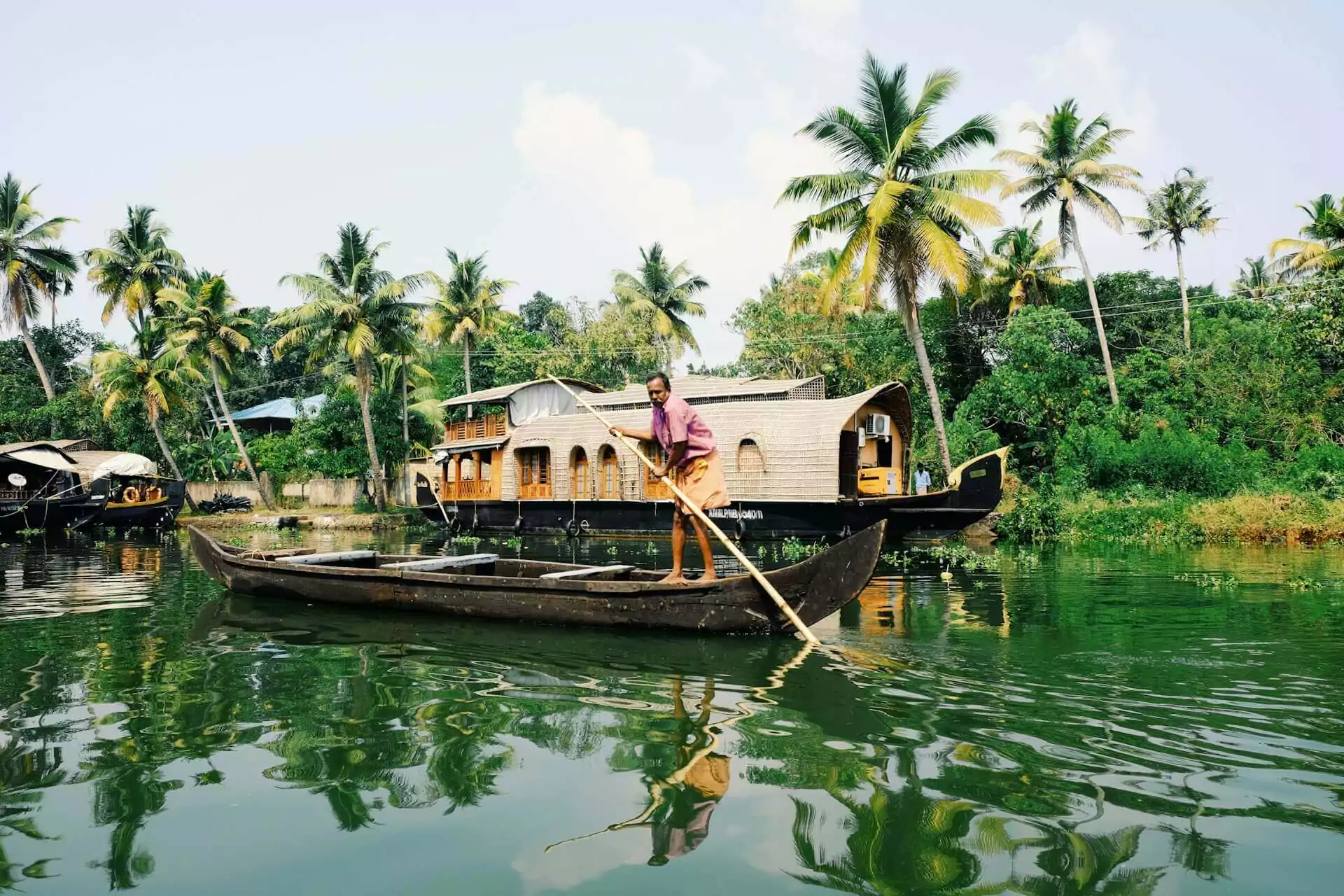India is a land of remarkable diversity and vibrant culture, making it one of the most fascinating countries in the world. With a population exceeding 1.4 billion, it stands as the world’s most populous nation in 2024. This vast country is not only known for its rich traditions and languages but also for its rapid economic growth and technological advancements.
From the bustling streets of Mumbai to the serene backwaters of Kerala, India offers a plethora of experiences that captivate travelers and locals alike. In this blog post, we will explore some facts about India in 2024 that highlight its unique heritage, incredible achievements, and the dynamic spirit of its people.
1. India’s Economic Surge In 2024
India has become the fourth-largest global economy, showcasing its rapid economic growth and development. This economic surge in 2024 is a testament to the nation’s resilience and innovation. Let’s dive into the key factors driving this growth and what it means for India and the world.
Booming Tech Industry
The tech industry in India is thriving. Startups are emerging across the nation. Established tech giants continue to expand. This sector’s growth contributes significantly to the economy.
Infrastructure Development
Infrastructure projects are transforming India’s landscape. New highways, railways, and airports are being constructed. These projects boost connectivity and support economic activities.
Foreign Investments
Foreign investments in India are at an all-time high. Major international companies are setting up operations. This influx of capital drives job creation and economic growth.
Educational Advancements
Education in India is evolving rapidly. More institutions are offering quality education. This creates a skilled workforce ready to meet global demands.
Renewable Energy Initiatives
India is investing heavily in renewable energy. Solar and wind energy projects are being developed nationwide. These initiatives promote sustainable growth and reduce dependence on fossil fuels.
Healthcare Improvements
The healthcare sector is witnessing significant improvements. New hospitals and clinics are being built. Advanced medical technologies are being adopted. These advancements contribute to overall well-being and economic stability.
Agricultural Innovations
Agriculture remains a crucial part of India’s economy. Modern farming techniques are being introduced. These innovations increase productivity and ensure food security.
Tourism Boom
Tourism is booming in India. New tourist attractions are being developed. Improved infrastructure and services attract more visitors. This sector’s growth generates revenue and creates jobs.
Rise Of E-commerce
E-commerce is on the rise in India. More people are shopping online. This shift boosts the economy and offers convenience to consumers.
Government Policies
Government policies are fostering economic growth. Initiatives like ‘Make in India’ and ‘Digital India’ are driving progress. These policies encourage innovation and entrepreneurship.
2. Uttar Pradesh’s Economic Milestone
India in 2024 presents a myriad of fascinating developments, showcasing its dynamic growth and transformation. One standout achievement is Uttar Pradesh’s remarkable economic milestone. This northern state, often referred to as the heartland of India, has made headlines with its impressive economic strides.
Uttar Pradesh’s Economic Surge
Uttar Pradesh has overtaken Karnataka to become the fourth-largest state economy, highlighting its significant economic progress. This achievement reflects the state’s robust policies and strategic initiatives aimed at economic growth.
Industrial Growth
Uttar Pradesh’s industrial sector has seen a significant boom. The state has attracted numerous investments, fostering the growth of manufacturing units and tech hubs. The rise in industrial activities has created numerous job opportunities, boosting the local economy.
Agricultural Advancements
The state has also made notable advancements in agriculture. With improved irrigation systems and modern farming techniques, Uttar Pradesh has increased its agricultural output. Farmers now enjoy better yields and higher incomes.
Infrastructure Development
Infrastructure development has played a crucial role in Uttar Pradesh’s economic milestone. The state government has invested heavily in building roads, highways, and urban facilities. These improvements have enhanced connectivity and spurred economic activities.
Education And Skill Development
Education and skill development have been key focus areas. Numerous educational institutions and vocational training centers have been established. These initiatives aim to equip the youth with the skills needed for the modern job market.
Tourism Boost
Tourism has also contributed to the state’s economy. Uttar Pradesh, home to iconic landmarks like the Taj Mahal, has seen a surge in tourist arrivals. This influx of tourists has boosted local businesses and created employment opportunities.
Economic Diversification
Economic diversification has been a critical factor. The state has diversified its economic base by promoting sectors such as technology, healthcare, and renewable energy. This diversification has made the economy more resilient and sustainable.
Government Initiatives
Government initiatives have been instrumental in this economic transformation. Policies aimed at improving the business environment and supporting small and medium enterprises have yielded positive results. The state’s ease of doing business has significantly improved.
Future Prospects
The future looks promising for Uttar Pradesh. With ongoing efforts to enhance infrastructure, education, and industry, the state is poised for continued economic growth. The success of Uttar Pradesh serves as an inspiration for other regions striving for economic advancement.
3. India’s Influence In Global Geopolitics
India continues to play a crucial role as a stabilizing force in global geopolitics, influencing international relations and policies. The year 2024 sees India emerging stronger on the global stage. This influence spans various sectors, including defense, economy, and diplomacy. Below, we delve into India’s geopolitical impact in 2024.
India’s Strategic Partnerships
In 2024, India strengthens its strategic partnerships with countries worldwide. These alliances are pivotal for regional stability and economic growth. India collaborates closely with major powers such as the United States, Russia, and the European Union.
- United States: Joint military exercises and technology transfers.
- Russia: Energy cooperation and defense agreements.
- European Union: Trade deals and climate change initiatives.
India’s Role In International Organizations
India’s role in international organizations is more prominent in 2024. India holds significant positions in the United Nations and the World Trade Organization. This involvement allows India to influence key decisions and policies.
| Organization | Role |
|---|---|
| United Nations | Non-permanent member of the Security Council |
| World Trade Organization | Key player in trade negotiations |
Defense And Security
India’s defense and security policies are robust in 2024. The country enhances its military capabilities and secures its borders. India also participates in international peacekeeping missions. This commitment helps maintain global peace and security.
- Modernizing armed forces with advanced technology
- Strengthening cybersecurity measures
- Collaborating on counter-terrorism efforts
Economic Influence
India’s economy is a powerhouse in 2024. The country is a key player in global trade and investment. India’s economic policies attract foreign investments and foster economic growth. This economic strength gives India significant leverage in global economic discussions.
- Leading exporter of software and IT services
- Major hub for manufacturing and innovation
- Attracting multinational corporations for business
Diplomatic Initiatives
India’s diplomatic initiatives in 2024 are noteworthy. The country advocates for global issues like climate change, sustainable development, and human rights. India’s diplomacy fosters international cooperation and partnerships.
Climate Change: Leading efforts in renewable energy and sustainable practices.
Human Rights: Promoting equality and justice worldwide.
Global Health: Contributing to international health initiatives and pandemic responses.
4. Innovations In India’s Digital Public Infrastructure
India is leading in technological innovations, particularly in its digital public infrastructure, which is transforming various sectors. In 2024, India’s advancements in digital public infrastructure have set new global standards. This blog section delves into the remarkable innovations driving this transformation.
Blockchain Technology For Secure Transactions
Blockchain technology has revolutionized the way India handles secure transactions. This technology provides transparent, tamper-proof records, enhancing the trust in digital transactions. Public and private sectors use blockchain for various applications, from supply chain management to voting systems.
Unified Payments Interface (UPI) Expansion
The Unified Payments Interface (UPI) continues to be a game-changer in the financial sector. In 2024, UPI processes billions of transactions monthly, making digital payments seamless. Its integration with international systems has simplified cross-border transactions.
Digital Identity With Aadhaar
The Aadhaar system remains a cornerstone of India’s digital infrastructure. This unique digital identity system supports over a billion residents. It facilitates access to various services, from banking to government benefits, ensuring inclusivity and security.
Smart Cities And Iot Integration
Smart cities in India leverage the Internet of Things (IoT) for efficient urban management. IoT devices monitor traffic, manage waste, and enhance public safety. These innovations improve the quality of life for millions of urban dwellers.
5G Network Rollout
India’s 5G network rollout is pivotal for its digital future. By 2024, 5G connectivity reaches remote and rural areas, bridging the digital divide. This fast network supports innovations in education, healthcare, and entertainment.
Artificial Intelligence And Machine Learning
Artificial Intelligence (AI) and Machine Learning (ML) are integral to India’s digital infrastructure. These technologies optimize public services, enhance cybersecurity, and drive economic growth. AI and ML applications are widespread, from chatbots to predictive analytics.
E-governance And Digital Services
India’s e-Governance initiatives simplify citizen interactions with government services. Digital platforms enable easy access to documents, registrations, and licenses. These innovations foster transparency, efficiency, and accountability in governance.
Digital Health Infrastructure
The digital health infrastructure in India ensures accessible and affordable healthcare. Telemedicine platforms connect patients with doctors, regardless of location. Digital health records streamline patient care and enhance medical research.
Education Technology (EdTech) Innovations
EdTech innovations are transforming India’s education sector. Online learning platforms offer interactive and personalized education. These digital tools ensure that quality education reaches students across the country.
Cybersecurity Enhancements
With growing digital adoption, cybersecurity remains a top priority. India invests in advanced cybersecurity measures to protect its digital infrastructure. These efforts safeguard sensitive data and ensure the integrity of digital transactions.
5. India’s Commitment To Climate Leadership
India is making strides in climate leadership, actively working towards achieving sustainable development goals and addressing environmental challenges. The nation is setting an example with its ambitious climate initiatives and policies. Here’s a deeper look at India’s commitment to climate leadership in 2024.
Renewable Energy Targets
India has set a bold target to generate 500 GW of renewable energy by 2030. This includes solar, wind, hydro, and biomass energy. By 2024, the country aims to have 175 GW of renewable energy capacity installed. This is a significant step towards reducing carbon emissions and combating climate change.
Green Transportation Initiatives
India is promoting electric vehicles (EVs) to reduce air pollution and dependence on fossil fuels. The government offers incentives for EV purchases and invests in charging infrastructure. Major cities are also adopting electric buses for public transportation.
Afforestation And Reforestation Programs
India has launched massive afforestation and reforestation programs to increase green cover. These programs aim to plant millions of trees across the country. By 2024, India targets to restore 26 million hectares of degraded land.
Sustainable Agriculture Practices
India is encouraging farmers to adopt sustainable agriculture practices. These include organic farming, efficient water use, and crop diversification. These practices help reduce greenhouse gas emissions and improve soil health.
International Climate Partnerships
India is collaborating with other nations to tackle global climate challenges. These partnerships focus on technology transfer, capacity building, and financial support. India is also an active participant in international climate forums and agreements.
Climate Education And Awareness
India emphasizes climate education and awareness among its citizens. Schools and universities include climate change topics in their curriculum. Public awareness campaigns highlight the importance of individual actions in combating climate change.
Investment In Green Technologies
India is investing heavily in green technologies and innovation. This includes renewable energy projects, energy-efficient buildings, and sustainable waste management solutions. The goal is to create a green economy that supports sustainable development.
Climate Resilience And Adaptation
India is implementing measures to enhance climate resilience and adaptation. This includes building infrastructure to withstand extreme weather events and developing early warning systems. These efforts aim to protect vulnerable communities and ecosystems.
| Initiative | Goal | Target Year |
|---|---|---|
| Renewable Energy | 500 GW capacity | 2030 |
| Afforestation | 26 million hectares | 2024 |
| Electric Vehicles | Widespread adoption | 2024 |
6. The Rise Of Indian Startups And Tech Hubs
India has always been a land of innovation and growth. In 2024, the country’s progress in technology and entrepreneurship is truly remarkable. The Indian startup ecosystem is booming, with new technological hubs emerging and contributing to the global tech landscape. Let’s dive into some fascinating facts about this rise.
Growth Of Unicorn Startups
India now has over 100 unicorn startups. These companies are valued at over $1 billion. The growth is phenomenal and shows no signs of slowing down.
Key Tech Hubs In India
Several cities in India have become major tech hubs. Here are some of them:
| City | Specialization |
|---|---|
| Bengaluru | Software and IT Services |
| Hyderabad | Biotech and Pharmaceuticals |
| Pune | Automotive and Manufacturing |
| Delhi NCR | E-commerce and Fintech |
Government Initiatives
The Indian government supports startups with various schemes. One such initiative is the Startup India program. It offers tax benefits, easier compliance, and funding support.
Investment Trends
Venture capital firms are investing heavily in Indian startups. In 2024, investments reached an all-time high. Top sectors include fintech, health tech, and EdTech.
Talent Pool
India has a vast pool of skilled professionals. This includes engineers, data scientists, and developers. They drive innovation and fuel the growth of startups.
International Collaborations
Indian startups are collaborating with global companies. These partnerships bring in technology, expertise, and funding. It helps Indian startups to scale and compete globally.
7. Celebrating India’s Rich Cultural Heritage
India, with its diverse traditions and rich history, stands as a testament to cultural unity in diversity. In 2024, the celebrations across the country reflect a deep connection to its roots. From colorful festivals to ancient art forms, India’s cultural heritage shines brightly. Let’s explore some fascinating aspects of India’s rich cultural heritage.
Festivals That Unite The Country
Festivals like Diwali and Holi continue to be celebrated with great enthusiasm, reflecting India’s vibrant cultural heritage. These festivals bring together people from all walks of life.
- Diwali: Known as the Festival of Lights, it symbolizes the victory of light over darkness.
- Holi: The Festival of Colors celebrates the arrival of spring and the triumph of good over evil.
Traditional Dance Forms
India boasts a variety of traditional dance forms, each with its unique style and history. These dances are not just art; they are a form of storytelling.
| Dance Form | Region | Significance |
|---|---|---|
| Bharatanatyam | Tamil Nadu | Represents South Indian culture |
| Kathak | North India | Combines music, dance, and drama |
| Odissi | Odisha | Known for its grace and fluid movements |
Ancient Art And Craft
India’s art and craft are a reflection of its historical and cultural richness. From intricate textiles to delicate pottery, these crafts are passed down through generations.
- Pashmina Shawls: Originating from Kashmir, these shawls are renowned for their softness.
- Madhubani Paintings: These paintings from Bihar depict nature and mythological events.
- Terracotta: The ancient craft of making items from baked clay is still practiced in many regions.
Historical Monuments
India is home to numerous historical monuments that speak volumes about its past. These structures are a blend of architectural brilliance and cultural stories.
- Taj Mahal: A symbol of love and one of the Seven Wonders of the World.
- Qutub Minar: This towering structure in Delhi showcases Indo-Islamic architecture.
- Hampi: The ruins of this ancient city in Karnataka tell tales of the Vijayanagara Empire.
8. India’s Biodiversity: A Natural Treasure
India in 2024 continues to dazzle the world with its rich culture, history, and natural beauty. One of its greatest assets is its incredible biodiversity. India is home to diverse wildlife, including Bengal tigers and Indian rhinoceros, making it a biodiversity hotspot. Let’s dive into the wonders of India’s natural treasures.
India’s Varied Ecosystems
India boasts a wide range of ecosystems, from the Himalayan mountains to the coastal regions. Each ecosystem hosts unique flora and fauna. The Western Ghats and the Sundarbans are UNESCO World Heritage Sites known for their biodiversity.
Iconic Wildlife Species
India shelters some of the most iconic wildlife on the planet. The Bengal tiger, one of the largest wild cats, roams the dense forests. The Indian rhinoceros can be spotted in the grasslands of Assam. These majestic creatures are symbols of India’s natural heritage.
Rich Flora And Fauna
India’s flora includes a wide variety of plants, from the towering banyan tree to the delicate lotus flower. The fauna is equally diverse, with species ranging from elephants to peacocks. The country has more than 45,000 plant species and over 91,000 animal species.
Protected Areas And National Parks
India has established numerous protected areas and national parks to conserve its biodiversity. There are over 100 national parks and 500 wildlife sanctuaries. These areas provide safe havens for endangered species and help maintain ecological balance.
Marine Biodiversity
India’s coastal regions and islands are rich in marine life. The Andaman and Nicobar Islands are particularly known for their coral reefs and diverse marine species. Marine sanctuaries protect the delicate underwater ecosystems.
Conservation Efforts
India actively engages in conservation efforts to protect its biodiversity. Initiatives like Project Tiger and Project Elephant aim to preserve critical species. Community involvement and international collaborations play key roles in these efforts.
Endangered Species
Despite conservation efforts, several species remain endangered. The Asiatic lion and the Snow leopard are facing significant threats. Continuous efforts are needed to ensure their survival and protect their habitats.
Climate Change Impact
Climate change poses a significant threat to India’s biodiversity. Rising temperatures and changing weather patterns affect habitats and species. Efforts to combat climate change are crucial for preserving India’s natural treasures.
9. The Impact Of The 2024 Lok Sabha Elections
India in 2024 is a dynamic and evolving nation, brimming with cultural richness, technological advancements, and political shifts. One of the most pivotal events shaping the country’s future is the 2024 Lok Sabha elections. The 2024 Lok Sabha elections have had a significant impact on India’s political landscape, shaping the country’s future direction.
Voter Turnout
The voter turnout in the 2024 elections reached an all-time high. Over 70% of eligible voters cast their ballots, showcasing the citizens’ eagerness to participate in democracy. This significant voter engagement reflects the public’s desire for change and progress.
Youth Participation
Youth participation surged in the 2024 Lok Sabha elections. More young people registered to vote, and many ran for office. Their involvement brought fresh perspectives and innovative ideas to the political arena, pushing for reforms in education, employment, and technology.
Key Political Parties
Several key political parties played crucial roles in the elections. The Indian National Congress and the Bharatiya Janata Party remained dominant forces. Emerging parties also gained traction, representing regional interests and specific demographics. This diversification contributed to a more representative and inclusive government.
Major Election Issues
Several major issues dominated the 2024 election campaigns. Topics such as economic growth, healthcare, and environmental sustainability were at the forefront. Candidates discussed policies addressing job creation, affordable healthcare, and climate change. These discussions highlighted the need for balanced development that benefits all citizens.
Technological Innovations
Technological innovations played a significant role in the 2024 elections. Digital campaigns and social media outreach became essential tools for candidates. Voters received information through various online platforms, making it easier to stay informed. This shift towards digital engagement marked a new era in Indian elections.
Election Security
Election security was a top priority in 2024. Advanced security measures ensured fair and free elections. Surveillance technology and strict regulations prevented fraud and manipulation. This commitment to transparency strengthened public trust in the electoral process.
Women Representation
Women representation saw a remarkable increase in the 2024 elections. More women candidates won seats, advocating for gender equality and social justice. Their presence in parliament is expected to drive policies that benefit women and marginalized groups, promoting a more equitable society.
Economic Implications
The 2024 Lok Sabha elections had significant economic implications. Policy changes aimed at boosting economic growth and reducing unemployment were introduced. These measures are expected to enhance India’s economic stability and provide more opportunities for citizens.
International Relations
The elections also impacted India’s international relations. New foreign policies were formulated to strengthen ties with global partners. These diplomatic efforts aim to position India as a key player on the world stage, enhancing its influence in international affairs.
10. Exploring India’s Culinary Diversity
India, a land of vibrant cultures and traditions, continues to captivate the world with its diversity. In 2024, one aspect that stands out is the country’s remarkable food landscape. India’s culinary scene is a mosaic of diverse flavors, offering a journey through its rich and varied food traditions. From the spicy curries of the south to the sweet delights of the north, India’s cuisine is an adventure waiting to be explored.
The Spice Symphony Of The South
The southern states of India are famous for their spicy and tangy dishes. The use of tamarind, curry leaves, and mustard seeds creates a unique flavor profile. Dishes like Dosa, Idli, and Sambhar are staples here. Each dish is a reflection of the local ingredients and traditions.
Sweet Delights Of The North
The northern part of India is known for its rich and creamy dishes. Butter Chicken, Paneer Tikka, and Naan are some of the popular dishes. Sweets like Gulab Jamun and Jalebi add to the culinary charm. The food here is often cooked in ghee, giving it a distinct richness.
The Coastal Feast Of The West
The western coastal regions offer a feast of seafood and coconut-based dishes. Goa’s famous Fish Curry and Maharashtra’s Malvani Chicken are must-tries. The use of fresh coconut and kokum gives these dishes a tropical twist.
The Aromatic East
The eastern states bring aromatic flavors to the table. Bengali cuisine with its fish preparations and sweets like Rasgulla is a highlight. The use of mustard oil and panch phoron (a blend of five spices) adds a unique taste to the dishes.
Street Food Extravaganza
India’s street food is a culinary adventure in itself. From Mumbai’s Vada Pav to Delhi’s Chaat, every corner has something delicious to offer. Street food is a quick and tasty way to experience local flavors.
Festivals And Food
Festivals in India are incomplete without special dishes. During Diwali, sweets like Ladoo and Barfi are prepared. Eid brings the aroma of Biryani and Sevaiyan. Each festival has its own set of traditional foods that add to the celebration.
Vegetarian Delights
India has a vast array of vegetarian dishes. Dishes like Paneer Butter Masala, Chole, and Rajma are popular. The use of spices and herbs makes vegetarian food flavorful and varied.
Fusion Cuisine
Fusion cuisine is gaining popularity in India. Combining traditional flavors with modern techniques creates exciting new dishes. Indian-Chinese and Indo-Italian are examples of this culinary trend.
Ayurvedic Influence
Ayurvedic principles influence many Indian dishes. Using ingredients like turmeric, ginger, and garlic promotes health and wellness. Ayurvedic cuisine focuses on balance and nourishment.
Regional Ingredients
India’s diverse geography provides a variety of regional ingredients. Saffron from Kashmir, tea from Assam, and spices from Kerala enhance the flavors of Indian dishes. These ingredients are an integral part of the culinary heritage.
Conclusion
Exploring India’s fascinating landscape in 2024 reveals a blend of tradition and innovation. From bustling cities to serene villages, the country offers diverse experiences. Staying informed about India’s progress and cultural richness can enhance your knowledge and appreciation. Embrace the vibrant journey India promises in the coming year.
Frequently Asked Questions
What Is India’s Population In 2024?
India’s population in 2024 is expected to surpass 1. 4 billion. This growth makes it one of the most populous countries. Population density remains high, especially in urban areas.
What Are India’s Major Cities In 2024?
In 2024, India’s major cities include Delhi, Mumbai, Bengaluru, and Kolkata. These cities are economic hubs. They offer diverse opportunities and attract people worldwide.
How Is India’s Economy In 2024?
India’s economy in 2024 is robust and growing. Key sectors include technology, agriculture, and manufacturing. Economic reforms continue to drive growth.
What Is India’s Technological Advancement In 2024?
India in 2024 leads in technology and innovation. The country excels in software development and digital services. Startups thrive in an encouraging ecosystem.










